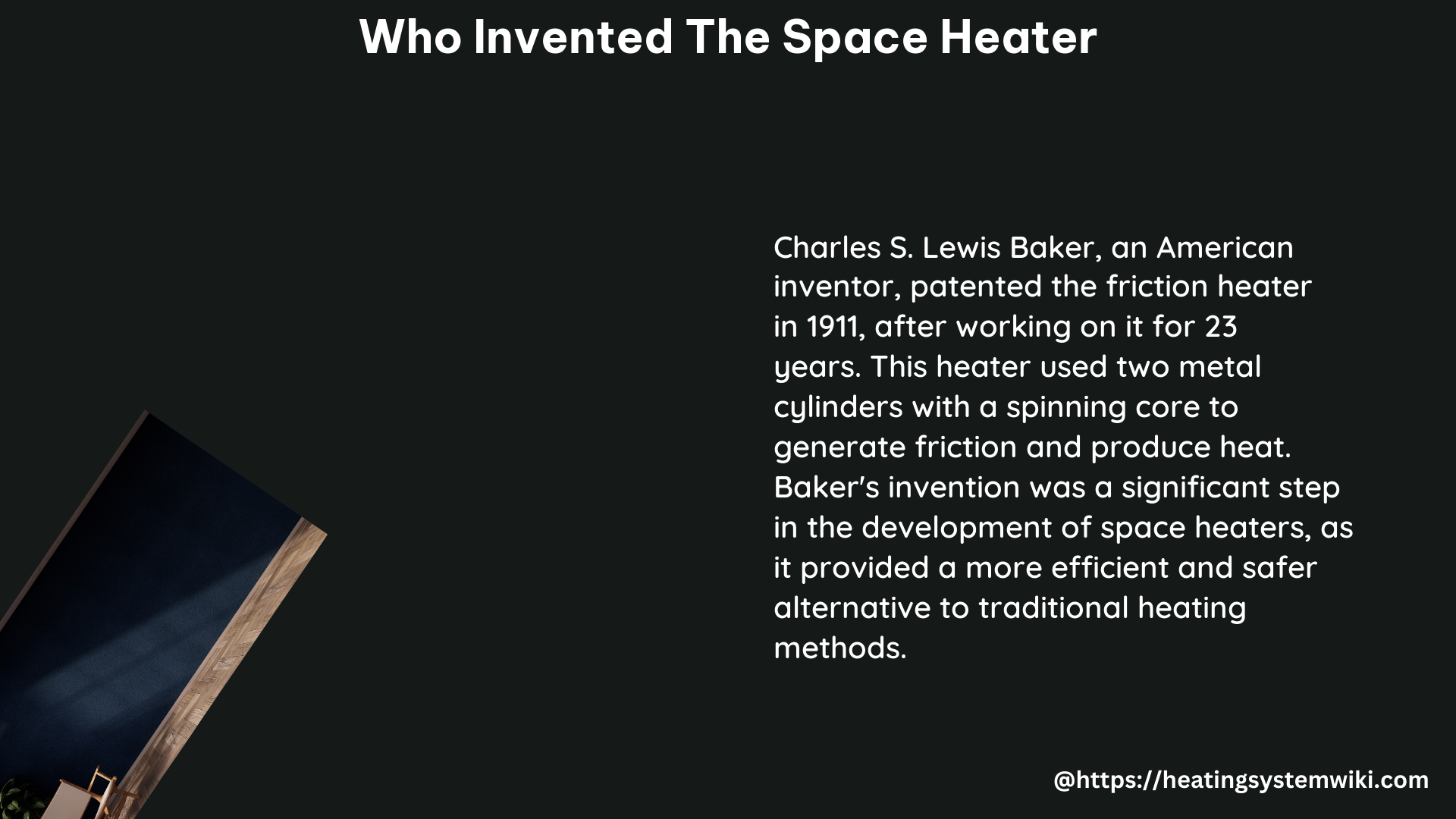The invention of the space heater is not attributed to a single individual, but rather, it is the result of numerous innovations and improvements made by various inventors and engineers over the centuries. From ancient civilizations to modern-day pioneers, the space heater has evolved significantly, providing a convenient and efficient way to heat small to medium-sized areas.
The Roots of Heating: Ancient Civilizations
The concept of heating spaces can be traced back to ancient civilizations, such as the Greeks and Romans, who utilized radiant heat and hypocaust furnaces to warm their buildings. The hypocaust system, developed by the Romans, was an underfloor heating system that circulated hot air through a network of channels beneath the floor, allowing for more efficient and even heating throughout a structure.
The Electric Heater: Thomas Edison’s Breakthrough

In 1883, Thomas Edison is credited with inventing the electric heater, which utilized his groundbreaking light bulb technology. Edison’s electric heater design was a significant step forward, as it allowed for a more controlled and localized heating solution compared to traditional methods.
The Radiator: Franz San Galli’s Contribution
Around the same time as Edison’s invention, Franz San Galli from Russia invented the radiator, which marked a significant advancement towards modern central home heating systems. Radiators work by circulating hot water or steam through a series of metal fins, effectively distributing heat throughout a room or building.
The Electrical Heating Element: Albert Marsh’s Discovery
In the early 1900s, Albert Marsh, a pioneering engineer, discovered Chromel, an alloy made of one-part Chromium and four-parts Nickel. This discovery heralded the coming of electrical heating elements in the market, which are the core components of modern electric space heaters.
The Gas Heater: Alice H. Parker’s Invention
In 1919, Alice H. Parker, a graduate of Howard University, invented the gas heater, which is now widely used in modern, central heating techniques for buildings. Parker’s design allowed for cool air to enter the model, with natural gas pumped into the furnace to create a heat exchange that processed warm air into the ducts, pouring into individual rooms of a house. Parker’s patent is considered a starting point for the advancements of heating, ventilation, and air conditioning (HVAC) systems.
Types of Space Heaters
Space heaters can be categorized into two main types: electric and combustion heaters.
Electric Space Heaters
Electric space heaters convert electricity into heat through the process of Joule heating, with heating elements being the main component. These elements come in various geometries and styles and can be used in either convective or radiant space heaters.
| Heating Element Type | Description |
|---|---|
| Coil | Utilizes a metal coil that heats up when electricity passes through it. |
| Ceramic | Made of a ceramic material that heats up and radiates heat. |
| Infrared | Emits infrared radiation to directly heat objects and people in the room. |
Combustion Space Heaters
Combustion space heaters, on the other hand, convert chemical energy into heat through the combustion of a fuel, and do not require electricity to function, making them suitable for off-the-grid use. These heaters typically use natural gas, propane, or kerosene as the fuel source.
Safety Considerations
Safety is a crucial aspect of space heaters, with fire, burns, and carbon monoxide poisoning being the main risks. Approximately 25,000 fires are caused by space heaters in the United States each year, resulting in about 300 deaths, and roughly 6,000 hospital emergency department visits annually are caused by space heaters, mainly from burns.
To ensure safe operation, it is recommended to:
– Plug space heaters directly into a wall outlet
– Inspect plugs and cords periodically for cracks or damage
– Keep flammable materials at least 3 feet away from the heater
– Turn off the heater when the last adult leaves the room or goes to sleep
By following these safety guidelines and understanding the history and evolution of the space heater, users can enjoy the convenience and efficiency of these heating devices while prioritizing their safety.
